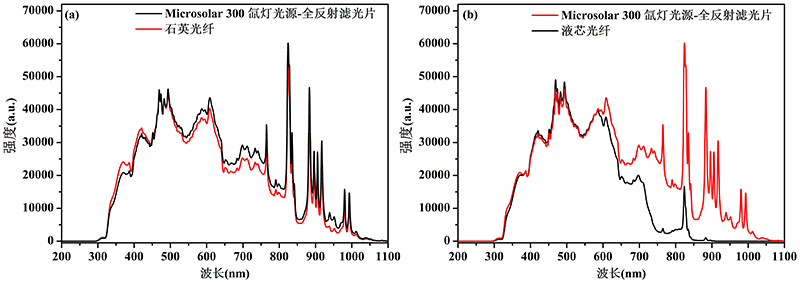The direction of light propagation is linear. To address the issue of flexible conduction of incident light, optical fibers have emerged. Optical fiber is a light-conducting tool made based on the principle of total internal reflection, enabling complex angles of irradiation.
In typical photocatalysis experiments, the light source needs to be directly aimed at the reactor's light window. However, in some specific photocatalysis experiments constrained by reactor shape and laboratory space, it's not convenient to place the light source close to the reactor. In such cases, it's necessary to redirect the light emitted by the light source into the reactor using optical fibers. Additionally, in some in-situ photocatalysis tests, due to the shape of the sample cell and the size of its light window, light redirection is also required, as in in-situ photocatalysis infrared diffuse reflection cells.
Fiber optics come in many types, and their functionality and performance vary depending on the fiber material.
In the field of photocatalysis and related research, the most commonly used optical fibers are quartz optical fibers and liquid core optical fibers.
Quartz optical fibers are made from highly pure quartz glass and possess the following characteristics:
1. High transmittance: Quartz optical fibers are optically transparent over a wide wavelength range, especially in the infrared region.
2. High mechanical strength: They can resist stretching and bending.
3. High damage threshold: They are less susceptible to phenomena like laser-induced breakdown.
Liquid core optical fibers use inorganic salt solutions or organic liquids as the core material and are sealed with hard, transparent materials at both ends as light windows for forward light transmission.
Liquid core optical fibers have the following characteristics:
1. Good beam homogenization with no stray spots.
2. A large numerical aperture, allowing the transmission of more light energy for efficient light conduction.
3. Selectable core liquids for specific functionalities.
4. Excellent ultraviolet wavelength light transmission, suitable for high-power light sources.
Differences between quartz optical fibers and liquid core optical fibers:
As seen in Figure 1, after adding quartz optical fibers to the xenon lamp light source, quartz optical fibers exhibit high transmittance in the ultraviolet, visible, and infrared regions between 320 nm and 1050 nm. However, liquid core optical fibers show specific absorption between 650 nm and 1050 nm, causing a partial reduction in the intensity of emitted light in this wavelength range.

Figure 1. Spectral comparison before and after adding (a) quartz optical fibers and (b) liquid core optical fibers to a xenon lamp light source.
Selection recommendations:
When full wavelength coverage (320 nm to 1050 nm) or infrared light transmission is needed, it's recommended to use quartz optical fibers. For applications requiring beam uniformity and the transmission of only ultraviolet and visible light, liquid core optical fibers are advised.
Compatibility Guide:
Quartz optical fibers can be used with PLS-SXE 300 Xenon Lamp Light Source, PLS-SXE 300UV Xenon Lamp Light Source, PLS-SXE 300D Xenon Lamp Light Source, PLS-SXE 300DUV Xenon Lamp Light Source, and Microsolar 300 Xenon Lamp Light Source.
Liquid core optical fibers can be used with PLS-SXE 300 Xenon Lamp Light Source, PLS-SXE 300UV Xenon Lamp Light Source, PLS-SXE 300D Xenon Lamp Light Source, PLS-SXE 300DUV Xenon Lamp Light Source, Microsolar 300 Xenon Lamp Light Source, PLS-FX300HU High Uniformity Integrated Xenon Lamp Light Source, and CHF-XM500 Mercury Lamp Light Source.